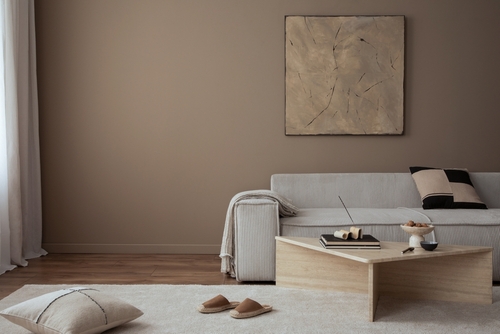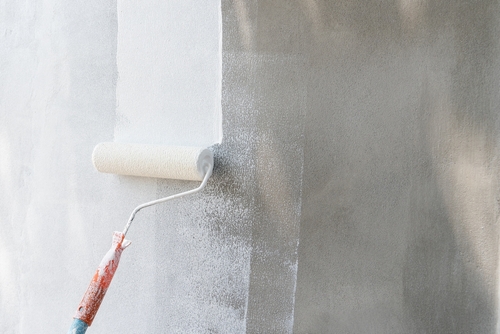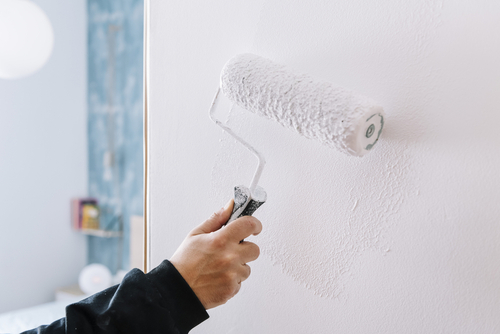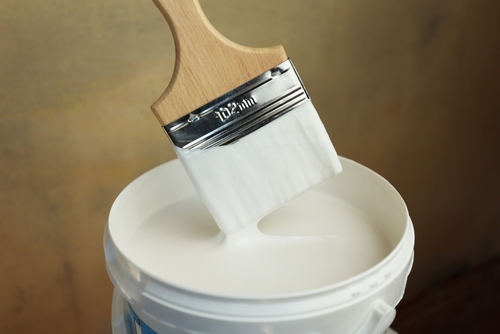
How to Remove Old Paint: Tips and Techniques
July 8, 2024
Painting Your Ceiling: Why It’s Important and How to Do It Right
September 18, 2024How to Use Paint to Make a Space Feel Larger?

How to Use Paint to Make a Space Feel Larger
How to Use Paint to Make a Space Feel Larger? Space perception is crucial in interior design, as it influences how comfortable and functional a room feels.
A well-designed space can enhance your mood, productivity, and overall well-being.
Using paint effectively can create the illusion of a larger space. By understanding color theory and applying strategic techniques, you can transform any room to feel more open and inviting.
This article provides practical tips for using paint to make spaces feel larger, offering insights into color choices, application techniques, and integration with decor.
Understanding Color Theory
Basics of Color Theory
Color theory involves understanding how colors interact and the effects they create. It includes concepts like the color wheel, warm vs. cool colors, and complementary colors.
Warm colors, like reds and yellows, tend to make spaces feel cozy but can also make them feel smaller. Cool colors, like blues and greens, tend to recede, making spaces feel larger and more open.
The color wheel helps identify primary, secondary, and tertiary colors, showing relationships between them. This tool is essential for creating harmonious color schemes.
Psychological Impact of Colors
Colors significantly impact mood and perception. Light, cool colors can create a calm and spacious feel, while dark, warm colors can feel cozy but confining.
Bright, light colors reflect more light, making a space feel airy and expansive. Dark colors absorb light, which can make a room feel smaller.
Choosing the Right Colors

Light Colors for Openness
Light colors like whites, pastels, and light grays make small spaces feel open and airy by reflecting more light. Shades like soft white, pale blue, and light gray are popular choices for creating a sense of spaciousness.
Monochromatic Color Schemes
A monochromatic color scheme uses variations of a single color to create a cohesive and harmonious look, enhancing the perception of space.
Using different shades and tones of the same color adds depth and interest without overwhelming the space.
Cool Colors for Calming Effect
Cool colors like blues, greens, and soft purples tend to recede, making walls appear farther away and rooms feel larger. These colors are ideal for creating a relaxing and spacious environment.
Techniques for Applying Paint
Creating Visual Continuity
Painting the walls and ceiling the same color eliminates visual boundaries, making the space feel larger. Seamless transitions between walls and ceilings enhance the feeling of openness.
Accent Walls
An accent wall can draw the eye to a focal point, elongating the room and adding visual interest. Select a wall that naturally draws attention, such as the one behind a bed or sofa.
Vertical and Horizontal Stripes
Vertical stripes can make a room feel taller by drawing the eye upward. Horizontal stripes can make a room feel wider by drawing the eye across the space.
Enhancing Light with Paint

Reflective Finishes
Glossy and semi-gloss finishes reflect more light, making the room appear brighter and more spacious. Using these finishes on walls and trim can enhance the light in a room, making it feel larger.
Light Sources and Placement
Lighter colors enhance natural light, making rooms feel brighter and larger. Use artificial lighting strategically to highlight light colors and enhance the perception of space.
Integrating Paint with Decor
Coordinating with Furniture and Accessories
Coordinating furniture colors with wall colors can create a harmonious look that enhances space. Light-colored furniture helps maintain an open and airy feel in the room.
Mirrors and Reflective Surfaces
Mirrors reflect light and create the illusion of depth, making rooms feel larger. Place mirrors opposite windows or light sources to maximize their reflective qualities.
Avoiding Common Mistakes
Overuse of Dark Colors
Dark colors can make a room feel smaller and more enclosed. If using dark colors, balance them with light elements to maintain a sense of openness.
Cluttered Color Schemes
Too many colors can make a small space feel cluttered and chaotic. Stick to a simple, cohesive color palette to maintain a sense of space.
Special Considerations for Different Rooms

Living Rooms
Use light, neutral colors to create an inviting and spacious living room. Consider using whites, beiges, and light grays with accent colors for depth.
Bedrooms
Choose calming, light colors to create a serene yet open bedroom. Soft blues, greens, and pastels work well in bedrooms.
Kitchens
Use bright, light colors to make small kitchens feel larger. Whites, light yellows, and soft grays create a clean and spacious feel.
Bathrooms
Light colors can make small bathrooms feel larger and more inviting. Use moisture-resistant paints and finishes in bathrooms to prevent mold and mildew.
Maintenance and Upkeep
Choosing Durable Paints
Select durable paints that can withstand regular cleaning and wear. Use high-quality, washable paints in high-traffic areas to maintain appearance over time.
Regular Cleaning and Touch-Ups
Regularly clean painted surfaces to maintain their appearance. Touch up any chips or scuffs promptly to keep the space looking fresh.
How to Use Paint to Make a Space Feel Larger? – Conclusion

Using light colors, reflective finishes, and strategic painting techniques can make any space feel larger. Integrate these methods with thoughtful decor and lighting.
Don’t be afraid to experiment with different colors and techniques to find what works best for your space.
Transforming your space with paint is a cost-effective and impactful way to create a more open and inviting environment. With the right colors and techniques, you can make any room feel larger and more welcoming!
Are you seeking professional and reliable painting services in Singapore? Contact us today!


